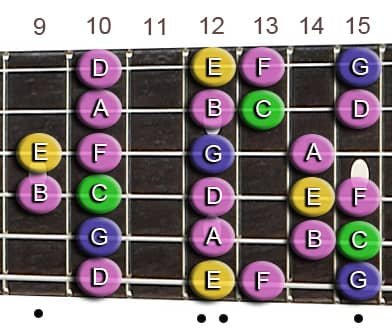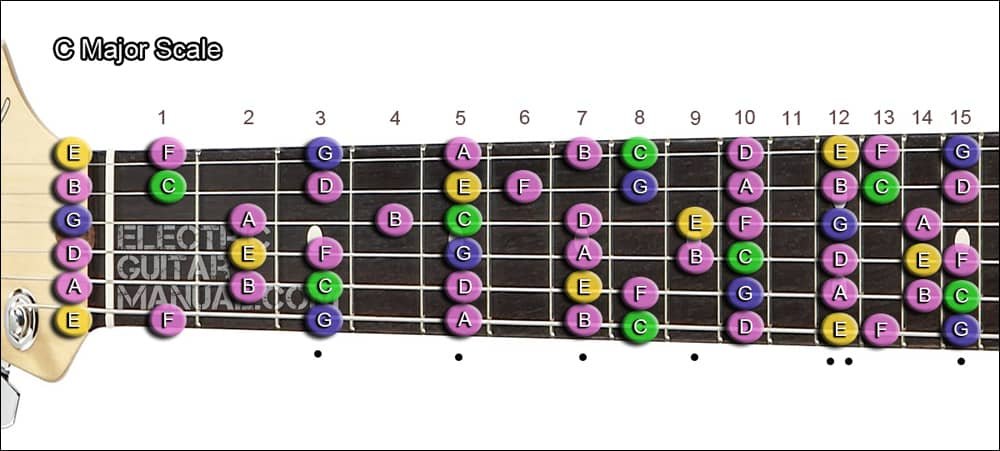
Complete GLOSSARY of Major, Minor, and Pentatonic SCALES for Guitar, in ALL Possible Keys and in the Entire Fretboard.
Difference Between Major and Minor Scale
The natural minor scale has the same structure as the diatonic major scale, but the intervals begin from the 6th note of the Major scale. This note is known as Relative minor.

In reality this scale would be a Greek Mode (Aeolian Mode) just like the major scale (Ionian Mode). Since it is the same structure or arrangement of intervals, but starting the scale at a different interval.
So if we learn the structure of a major scale, we will also know the arrangement of the notes in the fretboard, of a minor scale. The tonality of this scale is determined by the sixth note of a given major scale. Taking the previous example, it would be the C Major and A minor Scale. One structure, for two different scales.
Major and Minor Scales by Types in all Keys
Example:
Arrangement of the Notes of the C Major Scale (C), Distributed over the Entire Fretboard of the Guitar. The green circles mark the Tonic, the blue ones the Dominant or 5th, and the yellow ones the Median or 3rd. You can see how the notes colored in green, blue and yellow form C Major chords (image above).

Choose from the Menu below the Type of Guitar Scale you need: Major, Minor, Major Pentatonic, and Minor Pentatonic Scales. You’ll find the scale you’re looking for on large charts like the example above.
Relative Scales
Relative Scales or Keys are those that are made up of the SAME NOTES and Structure, but have different Keys. DISCOVER how to locate or calculate the Relative Minor of a Key or Scale, and how to get the most out of one of the juiciest and most fundamental concepts for a musician and guitarist. Relative Scales

